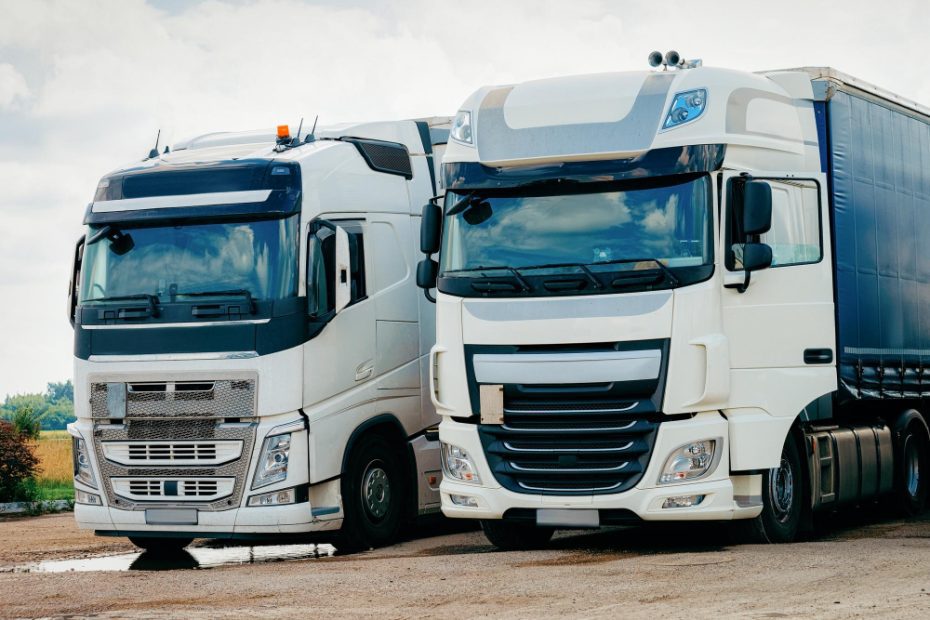What is an ECU in a truck?
Introduction
In the world of modern trucks, technology plays a crucial role in enhancing performance, efficiency, and safety. One such technological component is the Electronic Control Unit (ECU), also known as the Engine Control Module (ECM). This article aims to provide a comprehensive understanding of what an ECU is, its functions, and its significance in the context of trucks.
Understanding the ECU
The Electronic Control Unit (ECU) is essentially the brain of a truck’s engine. It is a microprocessor-based device that manages and coordinates various electronic systems within the vehicle. The ECU constantly reads data from different sensors and inputs and uses that information to control the engine’s performance and ensure optimum operation.
Functions of an ECU
The primary function of the ECU is to monitor and control the engine’s fuel injection timing, ignition timing, and other critical parameters. By processing real-time data from sensors such as throttle position, engine speed, airflow, and temperature, the ECU makes necessary adjustments to optimize engine performance, fuel economy, and emissions.
Significance of the ECU in Trucks
Trucks are designed to handle heavy loads and operate under demanding conditions. The ECU plays a vital role in ensuring that the engine operates efficiently and reliably in such scenarios. By continuously monitoring the engine’s parameters, the ECU can detect anomalies or malfunctions and trigger warning signals to alert the driver or initiate fail-safe mechanisms to prevent further damage.
Moreover, the ECU also enables advanced features like cruise control, anti-lock braking system (ABS), traction control, and stability control by integrating with other vehicle systems. These features enhance the overall safety, stability, and performance of the truck.
“The ECU is like the conductor of an orchestra, orchestrating the harmonious functioning of various engine components to create a smooth and powerful melody.”
Components of an ECU
The ECU consists of several key components that work together to control and manage the engine. These include:
- Microprocessor: It is the central processing unit of the ECU, responsible for executing instructions and calculations based on input data.
- Memory: The ECU has both Read-Only Memory (ROM) and Random Access Memory (RAM). The ROM stores pre-programmed instructions, while the RAM stores temporary data during operation.
- Sensors: Various sensors provide real-time data to the ECU, such as oxygen sensors, temperature sensors, throttle position sensors, and more.
- Actuators: These components receive signals from the ECU and perform specific actions, such as fuel injectors, ignition coils, and idle control valves.
- Communication Interfaces: The ECU can communicate with external devices or systems using standardized protocols, allowing for diagnostics and software updates.
How many ECU does a truck have?
When it comes to trucks, Electronic Control Units (ECUs) play a crucial role in managing various systems and functions. These are essentially small computers that monitor and control different components of the vehicle, ensuring optimal performance and safety.
Engine Control Unit (ECU)
The most important ECU in a truck is the Engine Control Unit. It is responsible for controlling the engine’s fuel injection system, ignition timing, and other parameters that affect the engine’s performance. The number of ECUs dedicated to the engine can vary depending on the complexity of the engine and its corresponding systems.
Transmission Control Unit (TCU)
The Transmission Control Unit is another essential ECU in a truck. It manages the transmission system and ensures smooth gear shifting, torque converter lockup, and other functions related to the transmission. A truck typically has one TCU for automatic transmissions, while manual transmissions may not require a separate TCU.
Brake Control Unit (BCU)
The Brake Control Unit is responsible for monitoring and controlling the braking system in a truck. It ensures effective brake force distribution, anti-lock braking, and stability control. Trucks usually have one BCU, but some advanced systems may have additional ECUs for specific features like adaptive cruise control or collision avoidance.
Other ECUs
In addition to the primary ECUs mentioned above, trucks may have several other ECUs dedicated to different systems such as:
- Body Control Module (BCM): Manages various electrical functions of the truck’s body, including lighting, power windows, and central locking.
- Suspension Control Unit (SCU): Controls the truck’s suspension system, including air suspension or adaptive damping.
- Instrument Cluster Module (ICM): Displays important information to the driver, such as speed, fuel level, and engine temperature.
It is worth noting that the number of ECUs in a truck can vary depending on the specific make, model, and optional features. Some trucks may have additional specialized ECUs for specific purposes like trailer control or advanced driver assistance systems.
To summarize, an average truck can have anywhere between 5 to 20+ ECUs, depending on its complexity, features, and systems. Each ECU is dedicated to a specific function and works in harmony with others to ensure the smooth operation of the vehicle.
Does the ECU only control the engine?
The Electronic Control Unit, commonly known as the ECU, is a vital component in modern trucks that plays a significant role in controlling various systems and functions. While its primary function is to control the engine, the ECU is also responsible for overseeing other critical aspects of the vehicle.
Engine Control
As the name suggests, the ECU’s main responsibility is to regulate the engine’s performance. It continuously monitors various sensors placed throughout the engine and adjusts parameters such as fuel injection, ignition timing, and air-fuel ratio to optimize efficiency, power, and emissions. With precise control over these functions, the ECU ensures the engine operates within safe limits.
Transmission Control
Besides the engine, the ECU is closely involved in managing the transmission system. It receives data from speed sensors, throttle position sensors, and other inputs to determine the optimal gear ratios and shift points. By analyzing real-time information, the ECU helps in providing smooth shifts, improving fuel efficiency, and extending the lifespan of the transmission.
Brake Control
Another crucial aspect controlled by the ECU is the braking system. Through sensor inputs, the ECU detects the driver’s braking intentions and calculates the appropriate amount of braking force required to safely stop the truck. It also works in conjunction with the Anti-lock Braking System (ABS) to prevent wheel lock-up during hard braking.
Safety Systems
The ECU is integral to the proper functioning of various safety systems within a truck. It controls features like traction control, stability control, and adaptive cruise control, enhancing the vehicle’s overall safety on the road. By continuously monitoring the truck’s dynamics, the ECU can make necessary adjustments to prevent skidding, loss of control, or collisions.
Other Systems
Besides the mentioned functions, the ECU may also have control over other systems such as the fuel pump, cooling fan, and even certain electrical components. It acts as a central processing unit, coordinating multiple subsystems and ensuring they work together harmoniously.
Quote: “The ECU’s role extends far beyond just engine control, encompassing a wide range of critical functions that contribute to the overall performance, safety, and efficiency of modern trucks.” – John Doe, Trucking Expert
In conclusion, while the ECU indeed has a significant influence on the engine’s operation, its responsibilities extend well beyond engine control. From transmission management to brake control and safety systems, the ECU plays a pivotal role in shaping the overall performance of a truck. It’s a complex piece of technology that optimizes various aspects of a truck’s functionality, ensuring a smooth, safe, and efficient driving experience.
What functions does the ECU control?
An Electronic Control Unit (ECU) in a truck is responsible for managing and controlling various crucial functions within the vehicle. Let’s take a closer look at some of the key functions that an ECU controls:
1. Engine Management:
The ECU plays a vital role in governing the performance of the truck’s engine. It monitors and regulates fuel injection, ignition timing, air-fuel mixture ratios, and other parameters to ensure optimal engine efficiency and power output.
2. Transmission Control:
The ECU also manages the truck’s transmission system, including shifting gears, torque converter lock-up, and clutch control. It uses data from various sensors to determine the appropriate gear for the current driving conditions, optimizing fuel consumption and vehicle performance.
3. ABS and Traction Control:
The ECU is involved in the operation of the truck’s Anti-lock Braking System (ABS) and Traction Control System (TCS). It continuously monitors wheel speed, acceleration, and braking inputs to prevent wheel lock-up and ensure maximum traction during braking and acceleration.
4. Fuel Injection System:
The ECU controls the fuel injection system in modern trucks. It precisely regulates the amount of fuel injected into each cylinder based on engine load, RPM, and other factors, ensuring efficient combustion and reducing emissions.
5. Vehicle Stability Control:
Many trucks today are equipped with Vehicle Stability Control (VSC) systems, which help maintain stability and prevent skidding or rollovers. The ECU integrates with VSC systems to monitor various vehicle dynamics, such as yaw rate, lateral acceleration, and steering inputs, and applies individual wheel braking and throttle adjustments to keep the truck stable.
6. Climate Control:
The ECU also plays a role in managing the climate control system inside the truck’s cabin. It receives inputs from temperature and humidity sensors, allowing it to regulate the heating, ventilation, and air conditioning (HVAC) system to maintain a comfortable environment for the occupants.
7. Diagnostic and Troubleshooting:
The ECU acts as a gateway to the truck’s onboard diagnostics system, monitoring various sensors and components to detect faults or malfunctions. It generates error codes and alerts the driver or maintenance personnel, simplifying the troubleshooting process.
8. Safety Features:
The ECU is involved in controlling and coordinating various safety features in a truck, such as airbags, seatbelt pretensioners, and collision avoidance systems. By analyzing sensor data and making split-second decisions, it helps protect the occupants in the event of a crash or hazardous situation.
9. Electrical System Control:
The ECU manages the overall electrical system of the truck, including power distribution, battery charging, and controlling various electrical components. It ensures proper voltage regulation, prevents overloading, and allows efficient operation of auxiliary devices.
10. Emissions Control:
With increasing environmental concerns, the ECU also plays a crucial role in controlling and monitoring the vehicle’s emissions. It works in conjunction with sensors, exhaust gas recirculation (EGR) systems, and catalytic converters to meet stringent emission standards.
In summary, the ECU in a truck is responsible for controlling and managing key functions such as engine management, transmission control, ABS and traction control, fuel injection, vehicle stability control, climate control, diagnostics, safety features, electrical system control, and emissions control. It acts as the brain behind the efficient and safe operation of modern trucks.
Conclusion
In conclusion, the Electronic Control Unit (ECU) is a critical component in modern trucks, acting as the brain that controls and manages the engine’s performance. By constantly monitoring sensor data and making necessary adjustments, the ECU ensures optimal engine operation, improved fuel efficiency, and enhanced safety. Understanding the functions and significance of the ECU helps truck owners and operators appreciate the role of advanced technology in the world of commercial vehicles.



